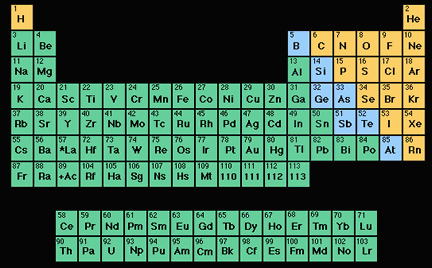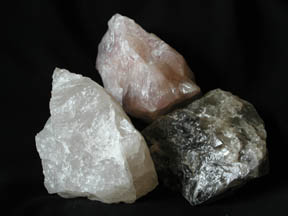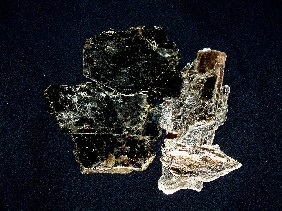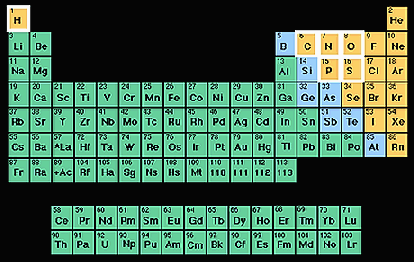The periodic table of the elements with the most common elements within living cells highlighted.
Click on image for full size
L.Gardiner/Windows to the Universe
The Elements of Life
Elements make up everything around us including the trees of a forest, your pets, and even YOU!
If you looked at living things with a microscope, you would see that all life is made up of small compartments called cells. Very small life forms, such as bacteria, have only one cell, while large animals have millions. No matter what type of life form, the cells of every creature are made of atoms of different elements.
The most common elements in a cell are:
Hydrogen (H) 59%
Oxygen (O) 24%
Carbon (C) 11%
Nitrogen (N) 4%
Others such as phosphorus (P) and sulphur (S) 2% combined
But these are not the only elements that have important roles for living things! Plants and animals need a variety of elements to survive and grow.
Elements that are important for animals (including people) include calcium (Ca), for growing bones and contracting muscles, chlorine (Cl), for digesting food, fluorine (F), which is often put in drinking water to help us keep and grow our tooth enamel. Iron (Fe) is very important for animals because it helps blood cells carry essential oxygen around to all the parts of the body.
Plants also need certain elements to survive and grow including magnesium (Mg), which is a part of the chlorophyll that allows plants to convert the Sunís energy into food through photosynthesis. The elements chlorine (Cl) helps plants do photosynthesis. Some plants, such as grass, contain silica (Si), which makes them very tough and difficult for animals to munch.
Last modified July 7, 2004 by Lisa Gardiner.
You might also be interested in:

Everything you see around you is made of tiny particles called atoms, but not all atoms are the same. Different combinations of protons , neutrons and electrons make different types of atoms and these
...more
An element (also called a "chemical element") is a substance made up entirely of atoms having the same atomic number; that is, all of the atoms have the same number of protons. Hydrogen, helium, oxygen,
...more
Though not the largest kingdom, with a mere 300,000 species catalogued, many might argue that the Kingdom Plantae just may be the most important group of living organisms. In the process known as "photosynthesis",
...more
Photosynthesis is the name of the process by which autotrophs (self-feeders) convert water, carbon dioxide, and solar energy into sugars and oxygen. It is a complex chemical process by which plants and
...more
Each type of mineral is made of a unique group of elements that are arranged in a unique pattern. However, to identify minerals you donít need to look at the elements with sophisticated chemical tests.
...more
Quartz is the second most common mineral in Earthís crust. It is a member of the quartz group, which includes less common minerals such as opal, crystobalite, and coesite. Silica (Si) and Oxygen (O) are
...more
Mica minerals make some rocks sparkle! They are often found in igneous rocks such as granite and metamorphic rocks such as schist. They sparkle because light is reflected on their flat surfaces, which
...more














